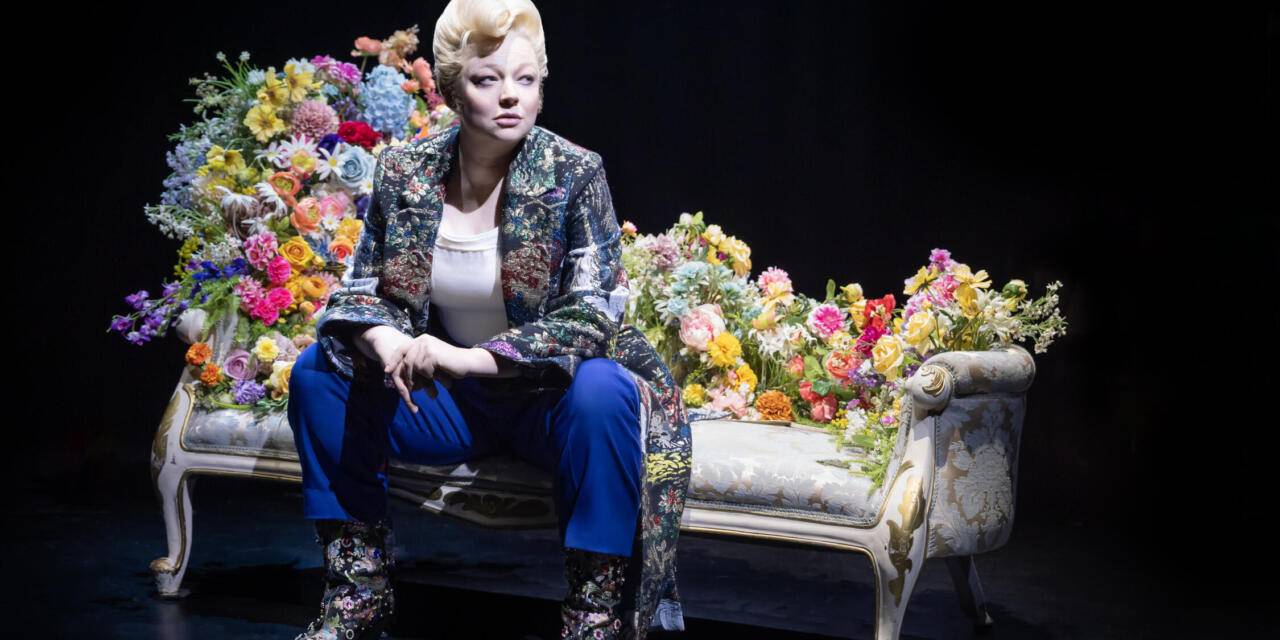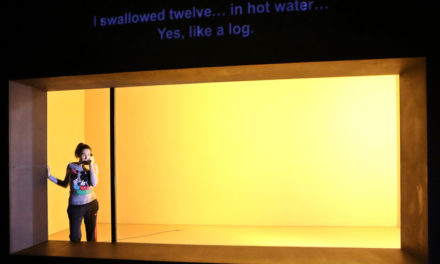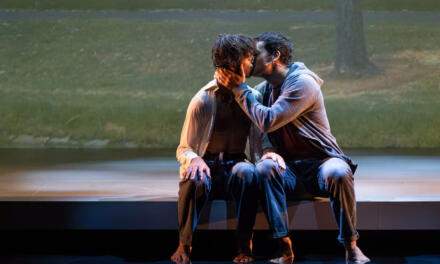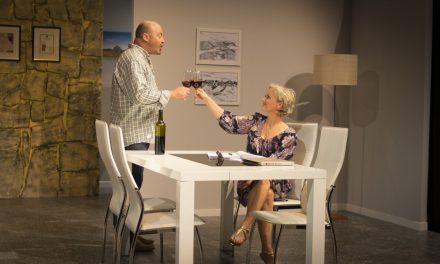A solo performance in theatre may often trap us inside a single dramatic character, taking us deep into their interiority. Or it may zigzag feverishly between an astounding range of figures and plunge us into the vast expanse of a panoramic narrative. A case in point for the latter is Kip Williams’s stage adaptation of Oscar Wilde’s 1891 novel The Picture of Dorian Gray, which has now opened at the Theatre Royal Haymarket in London after a 2020 run at the Sydney Theatre Company. With Sarah Snook (of Succession fame) performing 26 characters, this bracing revival brings a thoroughly original approach not only to the idea of a solo show, but to the very heart of its source material.
Wilde’s novel truly comes alive here through an ingenious dramaturgy of intermedial narration and enactment. Snook delivers an abridged version of the text, rapidly switching between the third-person narrator’s voice and those of its many characters, each of which she endows with a starkly distinctive tone and look. Central to all this is Marg Horwell’s beautifully eclectic and efficient set design, which foregrounds five suspended screens that change their configuration in each scene.
Projected onto these are both onstage cameras’ live capture of Snook’s unfolding performance and a good deal of pre-recorded material, brilliantly combined with the live feed. David Bergman’s video design keeps revising itself from start to finish, gradually incorporating iPhone cameras, face filters, and elaborately shot outdoor footage. Nick Schlieper’s ambient lighting and Clemence Williams’ emphatic sound design reinforce this central conceit with bravura.
Snook’s breath-taking—and, at times, breathless—rendering of these characters sets great store by astoundingly quick shifts in costume and makeup, with each figuration presenting a wholly new persona, whether young or old, male or female. Her performance is a tour de force: she has an uncanny ability to embody each character with searing ease and confidence. Her take on the eponymous part charts Gray’s descent from cheeky self-aggrandizement to deranged despair with chilling force. The frequent close-ups on her face allow her to enrich her performance with granular expressions (the slight raising of an eyebrow, a gentle curving of the mouth), while she also owns the entire playing area with an agile, commanding physicality.
Among the many brilliant achievements of this production is its thoughtful refraction of Dorian Gray’s tale through our present realities. Even though much of the mis-en-scene gives us the feel of a Victorian milieu, the play’s second half expands the story’s temporal reach with a range of visual and sonic anachronisms. By no means gimmicky, these additions—such as Gray self-doctoring a selfie, driving through a neon-lit London, and dancing to Donna Summer—tease out the novel’s resonances with our contemporary culture of digital spectacle and relentless self-display. It is a credit to Williams’s regie and Eryn Jean Norvill and Paige Rattray’s dramaturgy that this Victorian text feels irresistibly relevant and intriguing on stage.
This Picture of Dorian Gray is ultimately a masterclass in pushing the limits of theatrical form and multi-media storytelling in line with the demands of a rigorous adaptation. Inventive, sophisticated, and genuinely captivating: it is theatre at its best.
This post was written by the author in their personal capacity.The opinions expressed in this article are the author’s own and do not reflect the view of The Theatre Times, their staff or collaborators.
This post was written by Mert Dilek.
The views expressed here belong to the author and do not necessarily reflect our views and opinions.


















